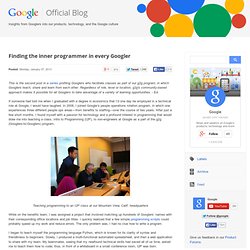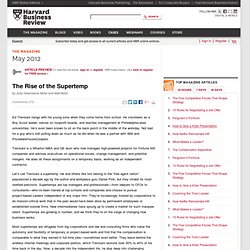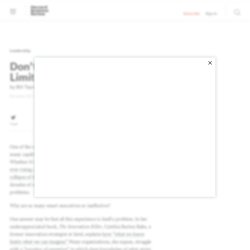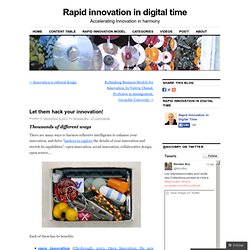

Finding the inner programmer in every Googler. This is the second post in a series profiling Googlers who facilitate classes as part of our g2g program, in which Googlers teach, share and learn from each other.

Regardless of role, level or location, g2g's community-based approach makes it possible for all Googlers to take advantage of a variety of learning opportunities. - Ed. If someone had told me when I graduated with a degree in economics that I’d one day be employed in a technical role at Google, I would have laughed. In 2008, I joined Google’s people operations rotation program, in which one experiences three different people ops areas—from benefits to staffing—over the course of two years. After just a few short months, I found myself with a passion for technology and a profound interest in programming that would draw me into teaching a class, Intro to Programming (I2P), to non-engineers at Google as a part of the g2g (Googlers-to-Googlers) program. Teaching programming to an I2P class at our Mountain View, Calif. headquarters. The Employees First Effect.
HCL Technologies: Transformational Global Services for IT and Engineering. HCL Technologies. The Rise of the Supertemp. Ed Trevisani hangs with his young sons when they come home from school.

He volunteers as a Boy Scout leader, serves on nonprofit boards, and teaches management at Philadelphia-area universities. He’s even been known to sit on the back porch in the middle of the workday. Not bad for a guy who’s still pulling down as much as he did when he was a partner with IBM and PricewaterhouseCoopers. Trevisani is a Wharton MBA and GE alum who now manages high-powered projects for Fortune 500 companies and advises executives on operational issues, change management, and potential mergers. He does all these assignments on a temporary basis, working as an independent contractor. Let’s call Trevisani a supertemp. Most supertemps are refugees from big corporations and law and consulting firms who value the autonomy and flexibility of temporary or project-based work and find that the compensation is comparable to what they earned in full-time jobs—sometimes even better.
What’s Behind the Shift. Rules For the Social Era - Nilofer Merchant. “This business model is right for a company selling Purina Dog Chow, circa 1970.”

“There’s no way we could ever be this collaborative.” Both are comments I got about my book, back in 2009, about setting direction, collaboratively. The first is from a Google executive; the second, from an exec at Cisco. Same business model architecture, two entirely different responses: obvious or unachievable. Facebook, KickStarter, Kiva, Twitter, and other companies thriving in the social era are operating by the rules of the Social Era. But too many major companies — Bank of America, Sony, Gap, Yahoo, Nokia — that need to get it, don’t. Like the rising temperature of the water the proverbial frog is sitting in, organizations are feeling the social era all around them, but failing to notice how significant a change it has produced. You might notice that I have used the term social era.
How does this work? Lean, not big. Home. Tivizio. Don't Let What You Know Limit What You Imagine - Bill Taylor. One of the most perplexing features of these troubled times is that so many capable people in so many fields look so lost and ineffective.

Whether it’s the stubborn inefficiencies of the health-care system, the ever-rising costs of the higher-education system, even the slow-motion collapse of the US postal system, leaders with unrivaled expertise and decades of experience can’t seem to develop creative solutions to dire problems. Why are so many smart executives so ineffective? One answer may be that all this experience is itself a problem. Nordstrom Innovation Lab. Let them hack your innovation! Thousands of different ways Each of them has its benefits: open innovation (Chesbrough, 2003.

Open Innovation: the new imperative) completely changes the innovation funnel, by discovering and embedding new solutions and expertise more rapidly that an internal R&D lab might accomplish; reversely, by “making unused ideas and technologies available to others, companies develop new business out of collaboration”;social innovation and user-led innovation (Von Hippel, 1986. Lead users: a source of novel product concepts) open the doors to cocreation, and position “customer communities to drive a business growth”. “Individuals prototype novel products and receive assistance in developing their innovations from fellow community members: information and assistance, as well as the innovations themselves, are freely shared ” show Franke and Shah in their 2002 study.
Open source management techniques Community is the metaphor: “Community is a common metaphor for open source sofware projects”.